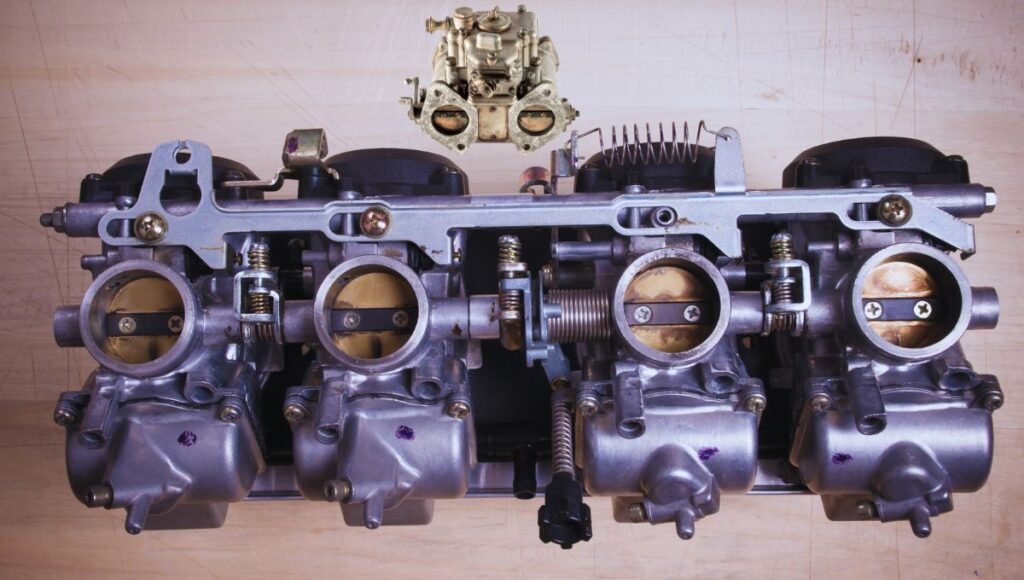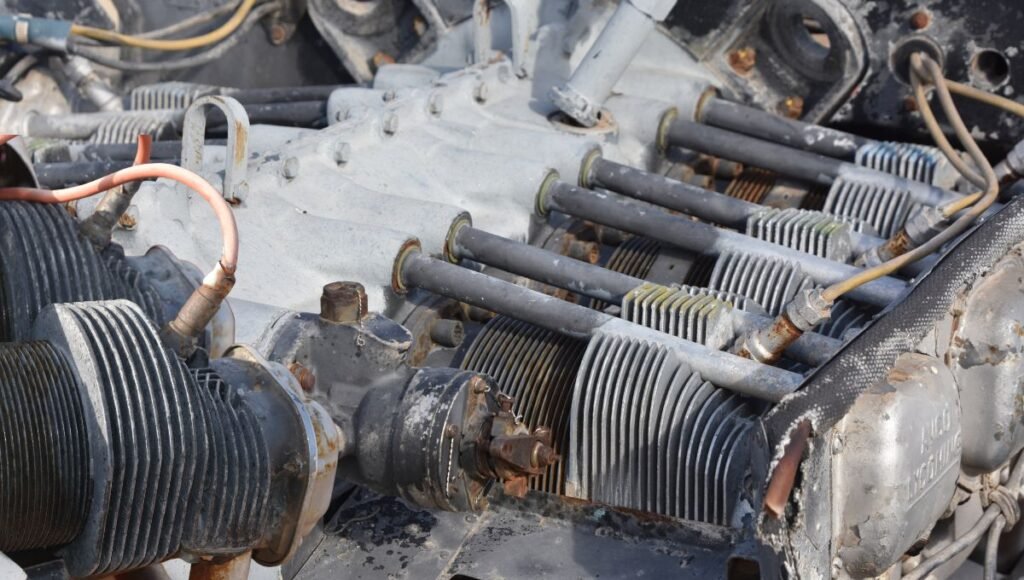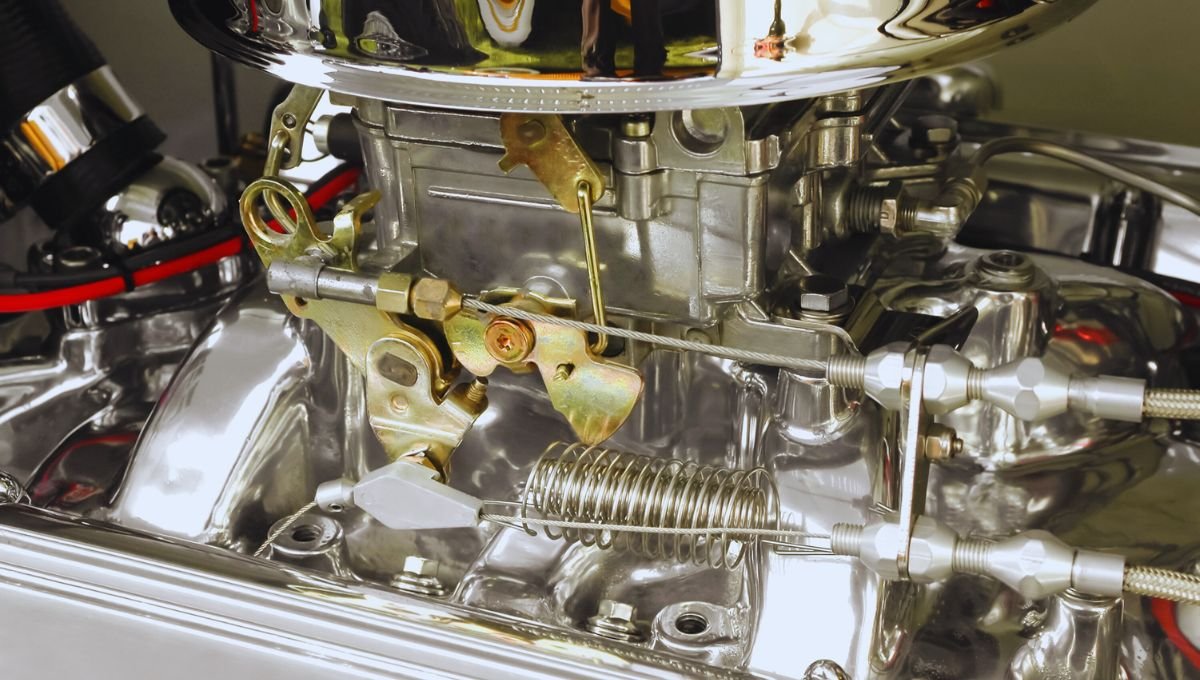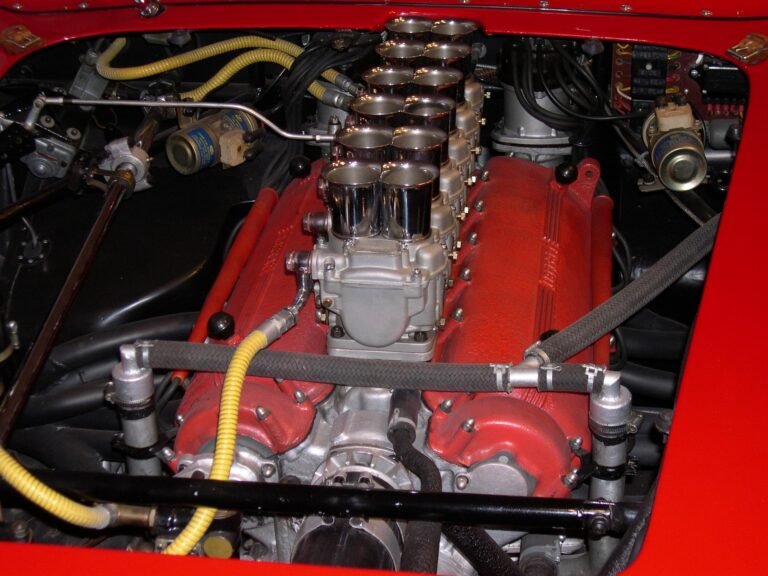How to Tune a 125Cc Carburetor: Quick & Easy Guide
To tune a 125cc carburetor, adjust the air-fuel mixture screw and the idle speed screw. Ensure the engine runs smoothly at various RPMs.
Properly tuning a 125cc carburetor is crucial for optimal engine performance. A well-tuned carburetor enhances fuel efficiency, improves throttle response, and reduces emissions. The process involves fine-tuning the air-fuel mixture and idle speed settings. Begin by warming up the engine to its normal operating temperature.
Adjust the air-fuel mixture screw for a balanced blend, ensuring smooth idling and acceleration. Next, tweak the idle speed screw to maintain a steady idle without stalling. Regular maintenance and tuning can prolong the engine’s lifespan and ensure consistent performance. Following these steps helps achieve a finely-tuned carburetor for your 125cc engine.

Introduction To Carburetor Tuning
Tuning a 125cc carburetor is crucial for optimal engine performance. A well-tuned carburetor ensures your engine runs smoothly and efficiently. Understanding the basics of carburetor tuning can save you time and money on repairs.
Importance Of Correct Tuning
Correct tuning of your carburetor is essential for several reasons:
- Improves Fuel Efficiency: Proper tuning ensures the engine uses fuel efficiently.
- Enhances Performance: A well-tuned carburetor boosts engine power and response.
- Reduces Emissions: Correct tuning helps in reducing harmful emissions.
- Prevents Engine Damage: It prevents engine overheating and detonation.
Incorrect tuning can lead to various engine problems. These include poor fuel economy, reduced power, and increased emissions. Ensuring your carburetor is properly tuned is vital for engine health.
Tools Needed For The Job
Before you start tuning your 125cc carburetor, gather these essential tools:
| Tool | Description |
|---|---|
| Screwdrivers | Flathead and Phillips for adjusting screws. |
| Socket Set | Various sizes for loosening bolts. |
| Carburetor Cleaner | For cleaning the carburetor parts. |
| Fuel Line Clamp | To prevent fuel leaks during adjustments. |
| Tachometer | To measure engine RPM accurately. |
Having the right tools makes the tuning process smoother. Ensure all tools are in good condition before starting.
Identifying Your 125cc Carburetor
Identifying your 125cc carburetor is the first step in tuning. Understanding its type and components is crucial. This guide will help you identify your carburetor easily. Let’s dive into the details.
Types Of 125cc Carburetors
There are several types of 125cc carburetors. Here are the most common ones:
- Slide Carburetors: These have a flat or round slide.
- Diaphragm Carburetors: These use a diaphragm to regulate fuel.
- Constant Velocity (CV) Carburetors: These have a variable slide controlled by engine vacuum.
Each type has its unique features and tuning requirements.
Recognizing Carburetor Components
Understanding the components of your carburetor is essential. Here’s a quick guide:
| Component | Description |
|---|---|
| Main Jet | Controls fuel flow at full throttle. |
| Pilot Jet | Manages fuel flow at idle and low throttle. |
| Needle | Regulates mid-range fuel delivery. |
| Float | Maintains fuel level inside the carburetor. |
Familiarize yourself with these components to make tuning easier. Here are some tips:
- Locate the main jet and pilot jet first.
- Check the needle position and adjust if needed.
- Ensure the float is not stuck or leaking.
Identifying and understanding these parts will help you tune your 125cc carburetor effectively.
Initial Preparation
Tuning a 125cc carburetor requires proper initial preparation. It’s essential to ensure your safety and the cleanliness of the carburetor before making adjustments.
Safety Measures
Before you start, follow these safety measures:
- Wear protective gloves to keep your hands safe.
- Use safety goggles to protect your eyes from debris.
- Make sure the engine is cool before you begin.
- Work in a well-ventilated area to avoid inhaling fumes.
- Keep a fire extinguisher nearby in case of emergencies.
Cleaning The Carburetor
Cleaning the carburetor ensures it functions properly. Follow these steps:
- Disconnect the fuel line to prevent spills.
- Remove the carburetor from the engine.
- Inspect the carburetor for visible dirt or debris.
- Use a carburetor cleaner spray to clean the parts.
- Pay special attention to the jets and passages.
- Use a small brush to remove stubborn dirt.
- Rinse with compressed air to ensure all debris is gone.
- Reassemble the carburetor carefully, making sure all parts are tight.
A clean carburetor will make tuning easier and more effective.

Adjusting The Air-fuel Mixture
Adjusting the air-fuel mixture is crucial for your 125cc engine’s performance. Proper tuning ensures better fuel efficiency and smoother rides. Follow these steps to get it right.
Locating The Mixture Screws
First, you need to locate the mixture screws on your carburetor. These screws adjust the air-fuel ratio. Typically, you will find them near the base of the carburetor.
Look for two screws: one for air and one for fuel. They are usually marked for easy identification. Refer to your manual if you’re unsure.
Setting The Base Line
Before making adjustments, set a baseline. Turn both screws clockwise until they are gently seated. Do not over-tighten them as this can damage the screws.
Next, turn each screw counterclockwise by 1.5 turns. This is your starting point. You may need to adjust further depending on your engine’s performance.
| Step | Action |
|---|---|
| 1 | Locate mixture screws |
| 2 | Gently seat both screws |
| 3 | Turn each screw 1.5 turns counterclockwise |
- Make small adjustments
- Test the engine after each change
- Listen for smooth idling
After setting the baseline, start your engine. Let it warm up. Make small adjustments to the screws. Turn one screw at a time. Check the engine’s response.
The goal is to achieve a smooth idle and optimal performance. If the engine stalls, adjust the screws slightly. Test again until you find the sweet spot.
Tuning The Idle Speed
Fine-tuning the idle speed of your 125Cc carburetor is crucial. This ensures that your engine runs smoothly at low speeds. An improperly tuned idle can cause stalling and poor performance. This guide will help you achieve the best idle speed for your bike.
Finding The Idle Speed Screw
First, you need to locate the idle speed screw. This screw is usually on the side of the carburetor. It controls the amount of air entering the engine at idle.
Follow these steps to find it:
- Look for the carburetor on the engine.
- Find the screw that is near the throttle linkage.
- Check your bike’s manual for the exact location.
Achieving The Optimal Idle
After locating the idle speed screw, you can adjust it. This will help you find the optimal idle speed for your 125Cc engine.
Use the following steps:
- Start the engine and let it warm up.
- Turn the idle speed screw clockwise to increase idle speed.
- Turn the screw counterclockwise to decrease idle speed.
- Listen to the engine. It should run smoothly without stalling.
Refer to the table below for common idle speed settings:
| Engine Type | Recommended Idle Speed (RPM) |
|---|---|
| 125Cc 4-stroke | 1200-1500 |
| 125Cc 2-stroke | 1400-1700 |
Make small adjustments and test the engine. This will help you find the perfect setting for your bike.
Fine-tuning The Main Jet
The main jet plays a crucial role in your 125cc carburetor. It controls the fuel flow at high RPMs. Fine-tuning the main jet ensures optimal performance and power delivery. This section will guide you through the process.
Assessing Main Jet Performance
Before you start, you need to assess the current performance of your main jet. Here are some steps:
- Warm up the engine for 5-10 minutes.
- Accelerate at full throttle.
- Observe the engine’s response and note any sputtering or hesitation.
If the engine hesitates, the main jet may be too small. If it sputters, the main jet may be too large.
Changing Main Jets
Once you have assessed the performance, you might need to change the main jets. Follow these steps:
- Turn off the fuel valve.
- Remove the carburetor from the engine.
- Open the float bowl to access the main jet.
- Use a screwdriver to remove the old main jet.
- Install the new main jet and ensure it’s secure.
- Reassemble the carburetor and attach it back to the engine.
Turn on the fuel valve and start the engine. Test the new main jet by repeating the assessment steps.
Road Testing And Additional Adjustments
After tuning your 125cc carburetor in the garage, it’s time for a road test. This step ensures your adjustments work well under real riding conditions. It helps identify any further tweaks needed to achieve optimal performance.
Conducting A Road Test
Start by riding your motorcycle on a flat road. Pay attention to how the engine responds. Specifically, focus on:
- Engine smoothness
- Throttle response
- Acceleration
- Exhaust smoke
Take note of any unusual sounds or behaviors. If the bike hesitates or sputters, it may require additional tuning. Perform this test for at least 15 minutes to get accurate results.
Making Incremental Adjustments
After the road test, make small adjustments to the carburetor. Use the following steps:
- Turn the idle screw slightly clockwise to increase RPM.
- Turn the mixture screw a quarter turn and ride again.
- Check for improvements in performance.
- Repeat until the bike runs smoothly.
Always make changes in small increments. This avoids over-adjusting and keeps the process manageable. Write down each change to track progress and revert if needed.
Remember, achieving the perfect carburetor tune requires patience. With careful road testing and incremental adjustments, your 125cc motorcycle will run at its best.
Maintenance Tips
Maintaining a 125cc carburetor ensures optimal performance and longevity. Regular upkeep prevents common issues and enhances fuel efficiency. Follow these maintenance tips to keep your carburetor in top shape.
Regular Check-ups
Regular check-ups are crucial for your 125cc carburetor. Inspect the carburetor every month. Look for any signs of wear or damage.
- Clean the carburetor components.
- Check for fuel leaks.
- Ensure all screws are tight.
Cleaning the carburetor ensures no dirt or debris clogs it. Use a carburetor cleaner spray. Spray it directly on the components. Wipe with a clean cloth.
Inspect the fuel lines for any cracks or leaks. Replace damaged lines immediately. Tighten all screws to prevent air leaks.

When To Seek Professional Help
Sometimes, you may need professional help. Here are signs you need an expert.
| Problem | Action |
|---|---|
| Engine stalls frequently | Consult a mechanic |
| Unusual engine noises | Get professional inspection |
| Fuel efficiency drops | Seek expert advice |
Frequent engine stalling indicates carburetor issues. Unusual noises from the engine are alarming. A professional mechanic can diagnose and fix these problems.
A drop in fuel efficiency is a red flag. An expert can adjust the carburetor for better performance.
Troubleshooting Common Issues
Tuning a 125cc carburetor can be tricky. Common problems like stalling and rough idling often arise. Identifying and resolving these issues improves your bike’s performance. Below, we discuss how to fix these common problems.
Resolving Stalling
Stalling can be frustrating. It often occurs due to improper fuel-air mixture. Follow these steps to resolve stalling issues:
- Check the idle speed screw. Adjust it to the manufacturer’s recommended setting.
- Inspect the air filter. A clogged filter restricts airflow. Clean or replace the filter if needed.
- Examine the fuel line for blockages. Ensure the fuel flows freely to the carburetor.
- Verify the spark plug condition. A fouled spark plug affects combustion. Replace it if dirty or worn out.
Taking these steps should help resolve stalling issues.
Fixing Rough Idling
Rough idling indicates an imbalance in the fuel-air mixture. Here’s how to fix it:
- Adjust the mixture screw. Turn it slowly to find the smoothest idle.
- Check for vacuum leaks. Inspect the intake manifold and hoses. Replace any damaged parts.
- Clean the carburetor jets. Dirty jets disrupt fuel flow. Use a carburetor cleaner for this task.
- Ensure the choke is operating correctly. A faulty choke affects the mixture. Repair or replace if needed.
These steps should help achieve a smooth idle. Regular maintenance prevents these issues.
Benefits Of A Well-tuned Carburetor
A well-tuned carburetor can transform your 125cc bike. It can enhance the ride quality significantly. The benefits extend from better performance to improved fuel efficiency. Let’s explore these advantages in detail.
Improved Performance
A properly tuned carburetor ensures optimal air-fuel mixture. This leads to better engine performance. You will experience smoother acceleration and more power.
- Quick throttle response
- Reduced engine vibrations
- Enhanced top speed
These improvements make your bike enjoyable to ride. Every twist of the throttle feels responsive and lively.
Enhanced Fuel Efficiency
A well-tuned carburetor can significantly improve fuel efficiency. It ensures the engine uses fuel more effectively.
| Condition | Fuel Efficiency |
|---|---|
| Well-tuned carburetor | High |
| Poorly-tuned carburetor | Low |
This means fewer stops at the gas station. You save money and extend the time between refuels.
Better fuel efficiency also means a more eco-friendly ride. Your bike emits less pollution, benefiting the environment.
Frequently Asked Questions
What Tools Are Needed To Tune A 125cc Carburetor?
To tune a 125cc carburetor, you’ll need a screwdriver, wrench set, and a tachometer. These tools help in making precise adjustments.
How Do You Adjust The Idle Screw?
To adjust the idle screw, locate it on the carburetor and turn it clockwise to increase idle speed or counterclockwise to decrease it.
Why Is My 125cc Engine Running Rich?
Your 125cc engine might be running rich due to a clogged air filter or incorrect carburetor settings. Check and clean the air filter, then adjust the carburetor.
How Often Should I Tune My 125cc Carburetor?
You should tune your 125cc carburetor every 3-6 months. Regular tuning ensures optimal performance and fuel efficiency.
Conclusion
Mastering the art of tuning a 125cc carburetor enhances your bike’s performance. Follow these steps for optimal engine efficiency. Regular maintenance ensures smooth rides and prolongs engine life. Remember, a well-tuned carburetor contributes significantly to fuel efficiency and overall riding experience.
Happy tuning and safe riding!

At AdjustCarburetor, we are passionate about optimizing engine performance and sharing our expertise in carburetors, small engines, fuel injection systems, air-fuel ratios, and ignition timing solutions






